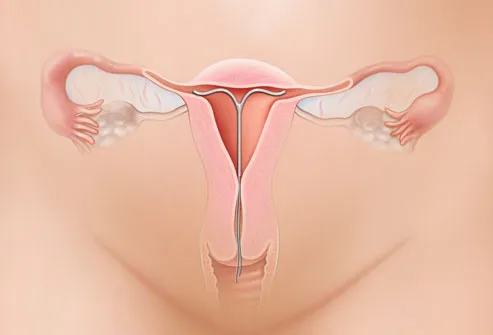 More doctors should speak with their teenage patients about
intrauterine devices (IUDs) and implants as possible methods of birth
control, a new study says.
More doctors should speak with their teenage patients about
intrauterine devices (IUDs) and implants as possible methods of birth
control, a new study says. only
if they'd previously been pregnant, when in fact, any sexually active
teen girl can be a candidate for this type of birth control, experts
say.
only
if they'd previously been pregnant, when in fact, any sexually active
teen girl can be a candidate for this type of birth control, experts
say. In addition, while all doctors counseled teen patients about condom use during sex, some did not discuss IUDs and implants as birth control
In addition, while all doctors counseled teen patients about condom use during sex, some did not discuss IUDs and implants as birth control options
because they feared teens with these devices would "feel freer to have
completely unprotected sex," which would put them at risk for sexually
transmitted diseases, the study found.
options
because they feared teens with these devices would "feel freer to have
completely unprotected sex," which would put them at risk for sexually
transmitted diseases, the study found.Teen pregnancy rates have been on the decline in recent years, but the United States is still has one of the highest teen pregnancy rates among developed countries, the researchers said. In 2011, more than 329,000 babies were born to U.S. women ages 15 to 19, according to the Centers for Disease Control and Prevention.
 Studies show IUDs and implants, known as long-acting reversible contraception
Studies show IUDs and implants, known as long-acting reversible contraception ,
are more effective at preventing pregnancy than other methods of
contraception. For instance, a study published last year in the New
England Journal of Medicine found that women who used birth control
pills, skin patches or vaginal rings were 20 times more likely to get
pregnant over a three-year period than women who used IUDs or implants.
,
are more effective at preventing pregnancy than other methods of
contraception. For instance, a study published last year in the New
England Journal of Medicine found that women who used birth control
pills, skin patches or vaginal rings were 20 times more likely to get
pregnant over a three-year period than women who used IUDs or implants.Some women may prefer long-acting reversible contraception because these devices provide birth control without the need to take a pill every day. However, only about 8.5 percent of U.S. women and 3 percent of teens use long-acting reversible contraception.
The new study interviewed 28 family physicians, pediatricians and obstetrician-gynecologists in New York City to identify barriers to teens' long-acting reversible contraception use. Overall, about 70 percent of doctors said they had discussed IUDs and 30 percent had discussed implants with teens. Pediatricians were the least likely to discuss these birth control methods, with just 22 percent mentioning IUDs and 11 percent mentioning implants, the study found.
In earlier decades, doctors were concerned IUDs might reduce fertility or increase infection risk in teens, and perhaps might not fit properly, said Dr. Metee Comkornruecha, adolescent medicine doctor at Miami Children's Hospital. But current research shows IUDs are safe and effective for teens, and that more doctors should be discussing them as birth control methods, Comkornruecha said. Last September, the American College of Obstetricians and Gynecologists (ACOG), recommended long-acting reversible contraception be offered to teens.
Still, these devices to carry risks. Women who currently have pelvic infections or get them frequently should not use the devices. ParaGard, which is a copper, hormone-free device, has been associated with heavy bleeding, severe cramping and vaginal inflammation. Mirena, an IUD that releases small amounts of a synthetic progestin hormone, may be associated with hormonal side effects, such as acne, weight gain or mood changes. None of these devices protect against sexually transmitted infections
 .
.These devices are also more expensive than birth control pills, and so not everyone may be able to afford them, and not all clinics may keep them in stock. Hormone-releasing IUDs cost about $850, and copper-containing IUDs cost about $650, Rubin said. Under the Affordable Care Act, approved methods of birth control, including long-acting reversible contraception, are required to be covered by insurance. However, insurance plans that were in place before March 23, 2010, are exempt from this requirement, so not everyone has seen changes to their coverage.
Pass it on: More doctors should speak with teens about long-acting reversible contraception as a method of birth control, experts say.
Follow Rachael Rettner @RachaelRettner . Follow MyHealthNewsDaily @MyHealth_MHND
. Follow MyHealthNewsDaily @MyHealth_MHND , Facebook
, Facebook & Google+
& Google+ .
.
 . Follow MyHealthNewsDaily @MyHealth_MHND
. Follow MyHealthNewsDaily @MyHealth_MHND , Facebook
, Facebook & Google+
& Google+ .
.